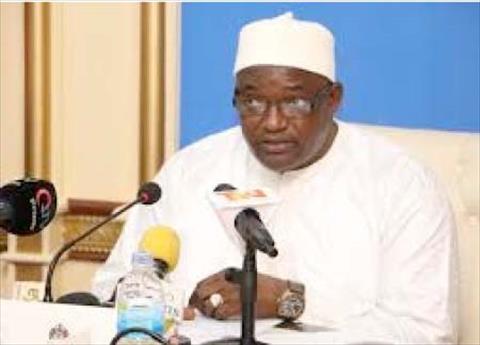
PART ONE
COVID-19 is an illness caused by a novel, or new, coronavirus first identified in Wuhan, China, in late 2019. The virus is SARS-Co-V-2, and the disease the virus causes, coronavirus disease 2019, is abbreviated as COVID-19. In early January, the WHO declared COVID-19 a public health emergency of international concern, signalling but not explicitly saying it could grow to become a pandemic. At this point many countries started planning for the worst and Gambia was no exception. Public Health professionals from the Ministry of Health started drawing strategies for a befitting response. The strategies included increased surveillance at all designated points of entry, mass sensitisation of the general public on the disease, promotion of hand washing, a communication unit was established and the public health emergency operations center was activated. Several committees were formed under different thematic areas and a national technical committee was also launched. However, it became clear that these activities alone were not enough to stop the entry of the infection in the country and more concerted efforts would be needed to stop the entry of the virus.
On the 17th of March 2020, Gambia registered its first case of COVID-19. A young Gambian National residing in the United Kingdom returning to The Gambia. Two days after her arrival, the young lady developed signs and symptoms of the disease and drove herself to the Medical Research Council where she tested positive for COVID-19. This development sent the entire Ministry of Health into a chaotic frenzy as it was evident that the country was ill-prepared to deal with the virus. There were not enough adequate protective equipment for the health care workers and virtually no training was accorded to most of the health workers at this time. However, the brave and gallant public health officers of the MOH were at hand to deliver services for the control of COVID-19 albeit to their own risk. Public Health students from both the college and university as well as public health professionals outside the Ministry of Health organised themselves to join the crusade. Driven by the motivation and conviction that the country comes first; these young men and women sprung into action to defend their motherland from an enemy they knew little about. A rigorous and painstaking contact tracing and isolation of contacts ensued. This very difficult task was made more difficult after the country recorded the second confirmed case, a 70 years old Bangladeshi national who was an Islamic scholar and had previously visited several countries before The Gambia. It was later revealed that he had interacted with hundreds of people if not thousands before he succumbed to the infection. Interestingly, his infection was only confirmed posthmothously thanks to the professionalism of our gallant health care workers who insisted on obtaining a sample and testing him for covid-19. In this article, we focus on quarantine as a public health measure for the control of infectious diseases.
QUARANTINE
Quarantine, was derived from the Italian words quarantagiorni which means 40 days. The practice began during the 14th century in an effort to protect coastal cities from plague epidemics. Ships arriving in Venice from infected ports were required to sit at anchor for 40 days before landing. This was done with a view of protecting local populations from infectious diseases imported by sailors and merchants.
In the recent past public health authorities have relied on this old public health measure to control and contain the spread of infectious diseases. During the 2003 pandemic of severe acute respiratory syndrome, the use of quarantine, border controls, contact tracing, and surveillance proved effective in containing the global threat in just over three months. For centuries, these practices have been the cornerstone of organised responses to infectious disease outbreaks. However, the use of quarantine and other measures for controlling epidemic diseases has always been controversial because such strategies raise political, ethical and socioeconomic issues and require a careful balance between public interest and individual rights.
The purpose of quarantine during the current outbreak is to reduce transmission by
- Separating contacts of COVID-19 patients from the community
- Monitoring contacts for development of signs and symptoms of COVID-19, and
In the Gambia, this medieval public health measure is one of the key strategies employed by the Ministry of Health to contain the spread of COVID-19. On the 21st March 2020 hundreds of contacts were traced, spanning a few days and all high risks contacts were placed on a mandatory 14 days quarantine and low risk contacts were followed up through telephone calls for the same period of time. While it is true that all Gambian borders are closed, it is no secret that people continue to enter the country. Some illegally, while other Gambian nationals returning home. These people are often quarantined based on the fact that their exposures whilst outside the country were not known and there is a high risk they could have been infected and if allowed to go into society could become a source of infection in the community. This is especially important given the fact that asyptomatic transmission of the virus is documented in many studies. It is against this view that quarantine centers were established to help curb the spread of COVID-19 in the country. As a matter of policy a wide range of services are provided for all persons under quarantine herein referred to as persons under investigation: firstly all persons suspected or known to be coming from COVID-19 affected countries who are caught at points of entries by health and immigration officers are directly transported from the borders to the quarantine centers through the use of an ambulance. This limits the interaction of those suspects with the general public and also health care workers in communities and health facilities.
Secondly, every person is allocated to an individual room except in circumstances where a pair or group of people are deemed to have the same level of exposure example couples, siblings, parents and their children. A key public health consideration in choosing a room for quarantine is the availability of toilet and shower facilities as well as a guaranteed source of water for hygiene and sanitation purposes. All persons are provided with high quality meals for the entire duration of the mandatory quarantine period and this includes breakfast, lunch, and dinner on daily basis.
There has been much debate as to why the Government is using hotels for quarantine when many other types of accommodation facilities are available. It is important to state that in selecting a place for quarantine a balance must be made over cost and comfort. It is a known fact that quarantine can be an emotionally and socially distressed situation which can be aggravated by poor housing conditions and thus make adherence to quarantine protocols very difficult.
ADMINISTRATION OF QURANTINE CENTERS
In The Gambia, the administration of quarantine facilities is coordinated under the following themes and personnel.
Coordination
Health Administrator (Public Health officer) supervises and coordinates with various organisations working with the facility. To ensure all activities take place according to standard protocol, separate teams were constituted for various purposes - supervisory team, admin team, logistic team, referral team, medicine / equipment team, hygiene sanitation team.
Daily review meetings are conducted under chairmanship of director (Public Health Services) to discuss day to day affairs and sort out any issue requiring attention.
Monitoring and Supervision
Daily monitoring visit is conducted inside quarantine facility and outside the facility in the surrounding campus by public health officers in charge and gaps to be noted. Necessary corrective actions and preventive actions are taken by the administrative officer.
Infection Prevention Control (IPC) measures
Infection prevention and control is a key intervention in all quarantine facilities. Standard precautions were employed to prevent and contain the spread of infection between infected quarantines, health care workers, other staffs and surrounding areas. To this effect quarantine centers have been designated clean and dirty areas, rooms for donning and doffing of PPEs have also been identified. A special map was prepared to outline the details of movement of health care and other personnel around the quarantine area and in the building. This is to ensure that movement of health care staffs and other personnel to prevent and control infections.
Securities
Well informed and trained security personnel were deployed all around mounting 24*7 rotation on shift basis to monitor the facility and to avoid entry of undesired persons. Escorting health officials in transporting suspected travellers from border entries to quarantine centers and confirmed cases from quarantine centers to treatment center as well.
Waste Management
To ensure that waste management in the facility takes place, foot operating dustbins were kept at each floor and in various positions inside the facility. It is collected at least twice in a week by waste management vehicle in consultation with the team at quarantine center. At site of collection waste is regularly disinfected before transported by the municipal council which is working directly with the waste team in terms of how to handle transport and dispose waste generated from quarantine centers.
Logistic manager- All logistic used in quarantine facility i.e., PPE, medical equipment, thermal thermometer, are purchased in advance. This is done in consultation and estimate the daily consumption of PPE, triple mask, gloves, etc. and monitored by logistician on daily basis.
Psycho-social support -As on arrival, there might be an obvious sense of psychological fear and panic among all the quarantine people and some of the involved stakeholders like health care professionals/staffs including doctors and security personnel etc. An interpersonal communication was made to all of them one after another in groups by Psychiatrist team initially and later on with individual counselling sessions.
Base on this availability of human resources at the quarantine facilities a total number of 1253 has completed quarantine and out of the nation 25 confirm cases of COVID-19, a total of 19 are from quarantine centers.
CONCLUSION
The initiation of quarantine in the Gambia is having positive effects as empirical evidence revealed that 19 of the 25 confirmed cases of COVID-19 came from quarantine centers. Given the highly ineffective nature of COVID-19, every case is capable of transmitting infection to about three people. There would have been grave consequences if quarantine was not used as a containment strategy.





